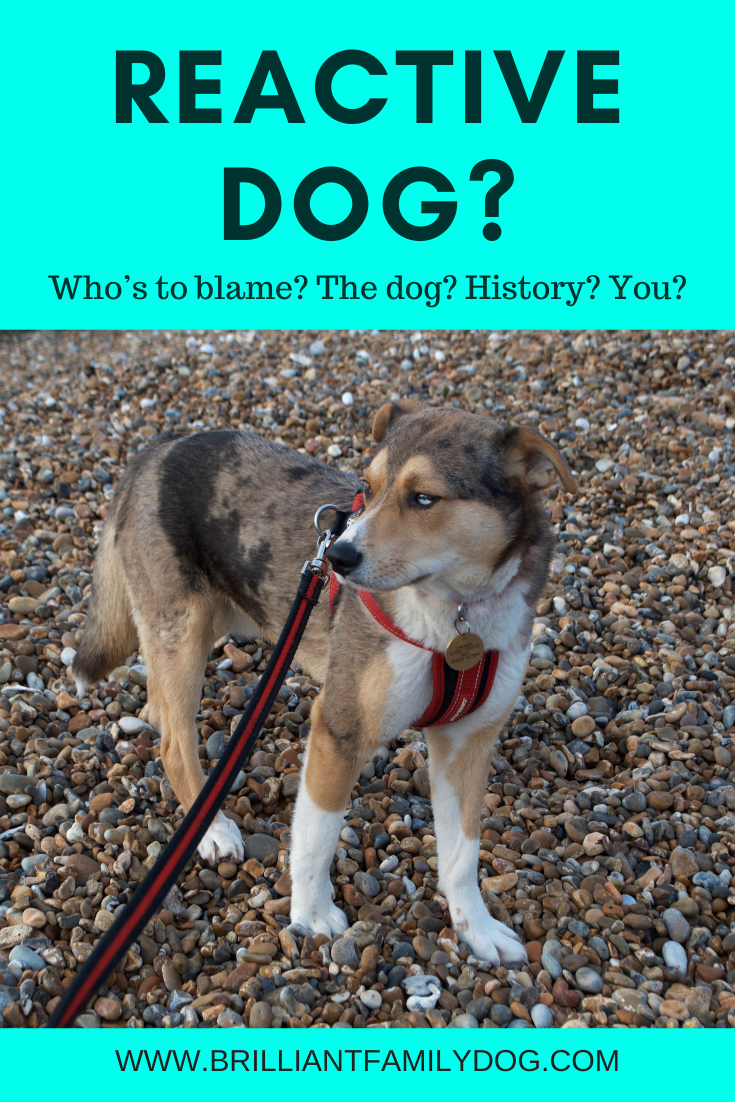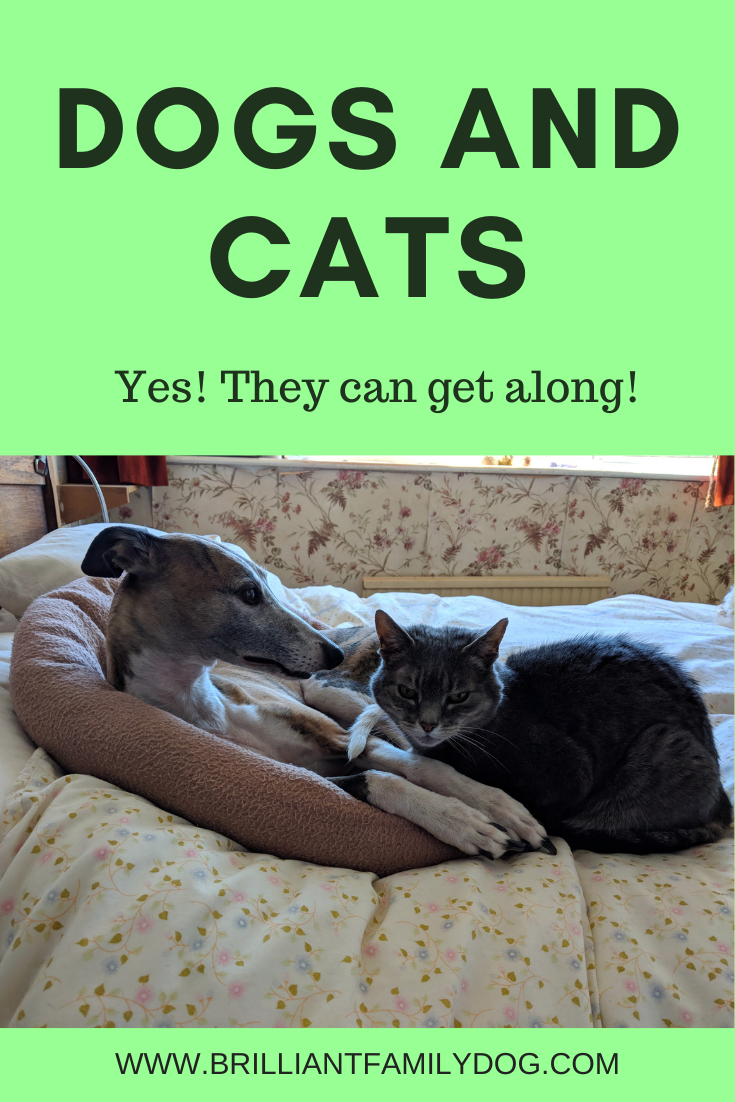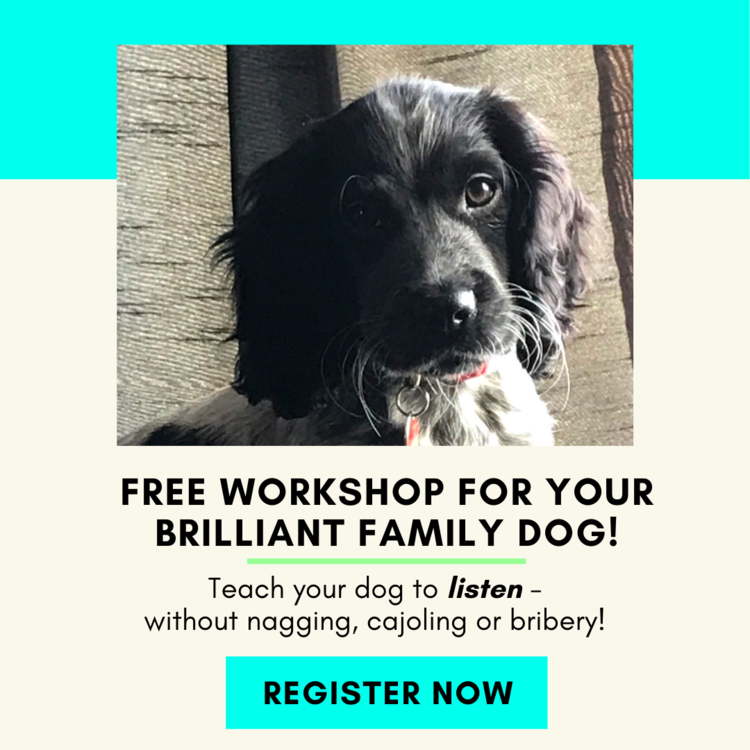First published on positively.com and reprinted here with permission
Well, the dog started it.
But now you are making it worse (although you really, really don’t mean to).
What am I talking about?
It’s when you’re walking your dog, and your charming, delightful, sweet family dog transforms into a nasty, snarling, barking hooligan.
Just because she spotted another dog.
It’s utterly baffling to you - you feel embarrassed and frustrated. You love your dog and you hate the looks people are giving you, down their noses, clearly thinking your dog is horrible!
I know, because I’ve been there too.
But there is light at the end of this particular tunnel. It may have started recently or it may have been going on (and getting steadily worse) for ages. Either way, breathe a sigh of relief, because we can change things!
Let me explain first why your dog is doing what she’s doing.
Aren’t all dogs meant to be friendly?
Even the mildest dog can have a fear-reaction to something - and Spaniels, Labradors, you-name-its, are just as likely as any other breed to become fearful of dogs or people.
It may be something new, something invading her space, something that is sending out danger signals. It’s how both we and the dog deal with this that will dictate whether this now becomes a new behaviour pattern or whether your dog says “Ah well,” and moves on.
Dogs have an intricate body language of which many of us are blissfully unaware. Just like us, they don’t launch into a strong reaction to something - they start with subtle signals and work their way up if those signals are ignored.
Dogs don’t bite “out of the blue” - it’s just that no-one noticed them politely saying “Excuse me, but I’m not happy about the way you’re staring at me.”
Just as you would shuffle away if a stranger sat close beside you on a bus, a dog will avert his gaze, turn his head away, turn his body away, lick his lips, yawn - amongst other things - to show that he’s anxious and he’s not a threat to the other dog.
If that stranger on the bus persisted in leaning on you, you wouldn’t pull a knife on him! Depending on your personality you may get up and move, you may shout, you may appeal for help from the other passengers. You would gradually escalate your response as you found that your polite signs were not working - only when you feel seriously threatened does your knife come out!
So if another dog is staring at your dog - even worse, coming straight towards her - your dog will be going through her entire repertoire of calming signals in an attempt to persuade the dog that she’s not a threat and the other dog should stop advancing right now. If her messages are not heeded, then she has no option but to bring out the heavy artillery and “shout” at the other dog, putting on an immense display of power and fury and teeth to keep him away.
So when we walk our dog along the road and see another walker and dog coming the other way, we are putting our fearful dog in a difficult position.
If we then do what so many people do, consciously or unconsciously - that is to tighten the lead as soon as you see the dog - you are a) telling your dog that something is about to happen and you are anxious, and b) preventing her from giving any of her calming body signals! It’s hard to look shy and inconspicuous if someone is holding your head up in the air.
Read this post all about Dog Body Language
Keep your distance!
Add to this that dogs have a very strong idea about personal space. As indeed do we - only a dog’s personal space is way bigger than ours! The more frightened she is, the bigger her worry area will become, until a dog appearing in the far distance can be enough to trigger an outburst.
So while we may feel comfortable walking towards another person along a narrow pavement hemmed in by hedges and parked cars, your anxious dog will most definitely not feel comfortable! Heading in a straight line towards a strange dog is both rude and threatening for your dog (and for the other dog, too).
We are unwittingly stirring up a situation by expecting our dogs to conform to our social norms.
So what can I do?
Once you appreciate that your dog is not being nasty or suddenly turning aggressive - rather she is afraid - you can see things from her perspective.
Dogs do what works. And up to now, barking and lunging on the lead has worked, to an extent. Either the other owner thinks “That’s a nasty dog,” and moves away, or you - in your embarrassment and confusion - get outa there yourself.
So quite often, barking and making a to-do have caused the progress towards another dog to stop.
Action Steps
So here’s a plan:
Avoid narrow paths, alleyways, and “tunnels” - be they tunnels of fences and parked cars, or tunnels of bracken and hedgerow.
Walk in the middle of fields, rather than hugging the hedge.
As soon as you see another dog, your first response should be to relax your hands, exhale, and look around for an exit strategy - the exact opposite of what is probably happening now (clutching the lead with a vice-like grip, sharp intake of breath, rising panic, trying to make your dog sit . . .)
Calmly and cheerfully ask your dog to turn with you (be fun and exciting, not anxious and stern), and head away: cross the road, go down a turning - in some way get away from the advancing dog.
Congratulate your dog (and yourself!) warmly for the calmness you’ve both shown in the face of a big challenge.
6. Let your dog know that she never has to meet another dog again, as you will always move away.
7. Remember that Distance is Your Friend.
With this plan in hand there’ll be no need for you to walk only at The Hour of The Difficult Dog. You’ll no longer be avoiding other dogs - rather you’ll be positively looking out for them so you can practice your new-found skills.
Yes, I did say that - it’s really true!
And if you don’t believe me, see what Scruffy the Jack Russell Terrier’s owners said:
“Scruffy used to become frantic and scrape at the floor to get towards any dog he saw, even at a great distance. This was embarrassing and stressful. He is now able to look at other dogs and move away with us to continue his walk. This is a massive improvement in just a few weeks. It means that we no longer avoid dogs, but in fact go out looking for them so that we can work on his training.”
And the world will begin to see your lovely, affectionate and clever dog as you see her.
You may think I’m oversimplifying this, but if half the team gets it together then this is a great start and can stop things going further downhill.
Give this plan a try and tell me in the comments below what you have found.



















